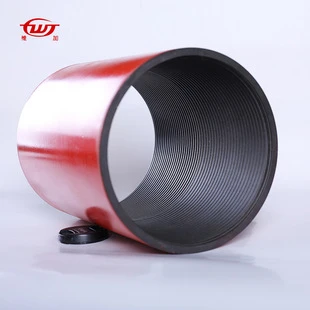- Afrikaans
- Albanian
- Amharic
- Arabic
- Armenian
- Azerbaijani
- Basque
- Belarusian
- Bengali
- Bosnian
- Bulgarian
- Catalan
- Cebuano
- Corsican
- Croatian
- Czech
- Danish
- Dutch
- English
- Esperanto
- Estonian
- Finnish
- French
- Frisian
- Galician
- Georgian
- German
- Greek
- Gujarati
- Haitian Creole
- hausa
- hawaiian
- Hebrew
- Hindi
- Miao
- Hungarian
- Icelandic
- igbo
- Indonesian
- irish
- Italian
- Japanese
- Javanese
- Kannada
- kazakh
- Khmer
- Rwandese
- Korean
- Kurdish
- Kyrgyz
- Lao
- Latin
- Latvian
- Lithuanian
- Luxembourgish
- Macedonian
- Malgashi
- Malay
- Malayalam
- Maltese
- Maori
- Marathi
- Mongolian
- Myanmar
- Nepali
- Norwegian
- Norwegian
- Occitan
- Pashto
- Persian
- Polish
- Portuguese
- Punjabi
- Romanian
- Russian
- Samoan
- Scottish Gaelic
- Serbian
- Sesotho
- Shona
- Sindhi
- Sinhala
- Slovak
- Slovenian
- Somali
- Spanish
- Sundanese
- Swahili
- Swedish
- Tagalog
- Tajik
- Tamil
- Tatar
- Telugu
- Thai
- Turkish
- Turkmen
- Ukrainian
- Urdu
- Uighur
- Uzbek
- Vietnamese
- Welsh
- Bantu
- Yiddish
- Yoruba
- Zulu
Understanding API Tubing and Casing Standards for Oil and Gas Applications
Understanding API Tubing and Casing Charts
In the oil and gas industry, tubing and casing are critical components of well construction and operation. The American Petroleum Institute (API) has established a set of standards for the design and specification of these materials, which helps ensure safety, efficiency, and performance in various drilling and production environments.
What is Tubing and Casing?
Before diving into the details of API tubing and casing charts, it is essential to understand what tubing and casing are. Casing is a series of pipes that are installed in the wellbore to prevent the walls of the borehole from collapsing and to isolate fluids in different formations. Tubing, on the other hand, is the pipe through which oil, gas, or water is produced to the surface. Tubing is installed inside the casing and is responsible for conveying hydrocarbons to the production facilities.
API Standards
The API has developed specifications that dictate the dimensions, materials, and testing procedures for both tubing and casing. These standards ensure that the pipes can withstand the pressures and temperatures encountered during drilling and production. API specifications are revised periodically to accommodate advances in technology and changing industry needs.
The most commonly referenced API specifications for casing and tubing include API 5CT for casing and API 5L for line pipe, while for tubing, API 5CT specifies various grades and sizes that can be used in different service conditions
.Tubing and Casing Charts
api tubing and casing chart

API tubing and casing charts are essential references that provide a wealth of information, including dimensions, weights, and material properties. These charts allow engineers and technicians to quickly identify the appropriate size and material grade required for specific drilling conditions.
A typical tubing chart will display dimensions such as nominal pipe size, outside diameter, wall thickness, weight per foot, and yield strength. Similarly, a casing chart provides similar information but often includes details specific to the application of the casing, such as the maximum pressure rating and temperature limits.
For example, a tubing chart might show that a 2 3/8-inch tubing has an outside diameter of 2.375 inches, a wall thickness of 0.205 inches, and a weight of 4.7 pounds per foot. In its turn, a casing chart for a 9 5/8-inch casing might indicate an outside diameter of 9.625 inches, a wall thickness of 0.365 inches, and a weight of 40 pounds per foot.
Importance of Selection
Selecting the correct tubing and casing is vital for the integrity of the well and the overall success of drilling operations. Improper selection can lead to catastrophic failures, including blowouts, leaks, and other environmental hazards. Hence, engineers must consider factors such as the expected pressures and temperatures, the type of fluids being produced, and the geological characteristics of the formations being drilled.
Furthermore, various coating and treatment options are available to enhance the longevity and performance of tubing and casing materials. For instance, corrosion-resistant alloys may be required in sour gas environments, while other applications might demand high-strength materials that can withstand extreme pressures.
Conclusion
In conclusion, API tubing and casing charts are indispensable tools for professionals in the oil and gas sector. They provide vital information for the selection of tubing and casing materials that meet the stringent requirements of drilling and production operations. By adhering to API standards and utilizing these charts effectively, engineers can ensure the safety, reliability, and efficiency of well construction, ultimately leading to successful hydrocarbon recovery. Understanding and implementing these specifications will not only protect investments in drilling operations but also contribute to the overall sustainability of the oil and gas industry.
-
Tubing Pup Joints: Essential Components for Oil and Gas OperationsNewsJul.10,2025
-
Pup Joints: Essential Components for Reliable Drilling OperationsNewsJul.10,2025
-
Pipe Couplings: Connecting Your World EfficientlyNewsJul.10,2025
-
Mastering Oilfield Operations with Quality Tubing and CasingNewsJul.10,2025
-
High-Quality Casing Couplings for Every NeedNewsJul.10,2025
-
Boost Your Drilling Efficiency with Premium Crossover Tools & Seating NipplesNewsJul.10,2025







